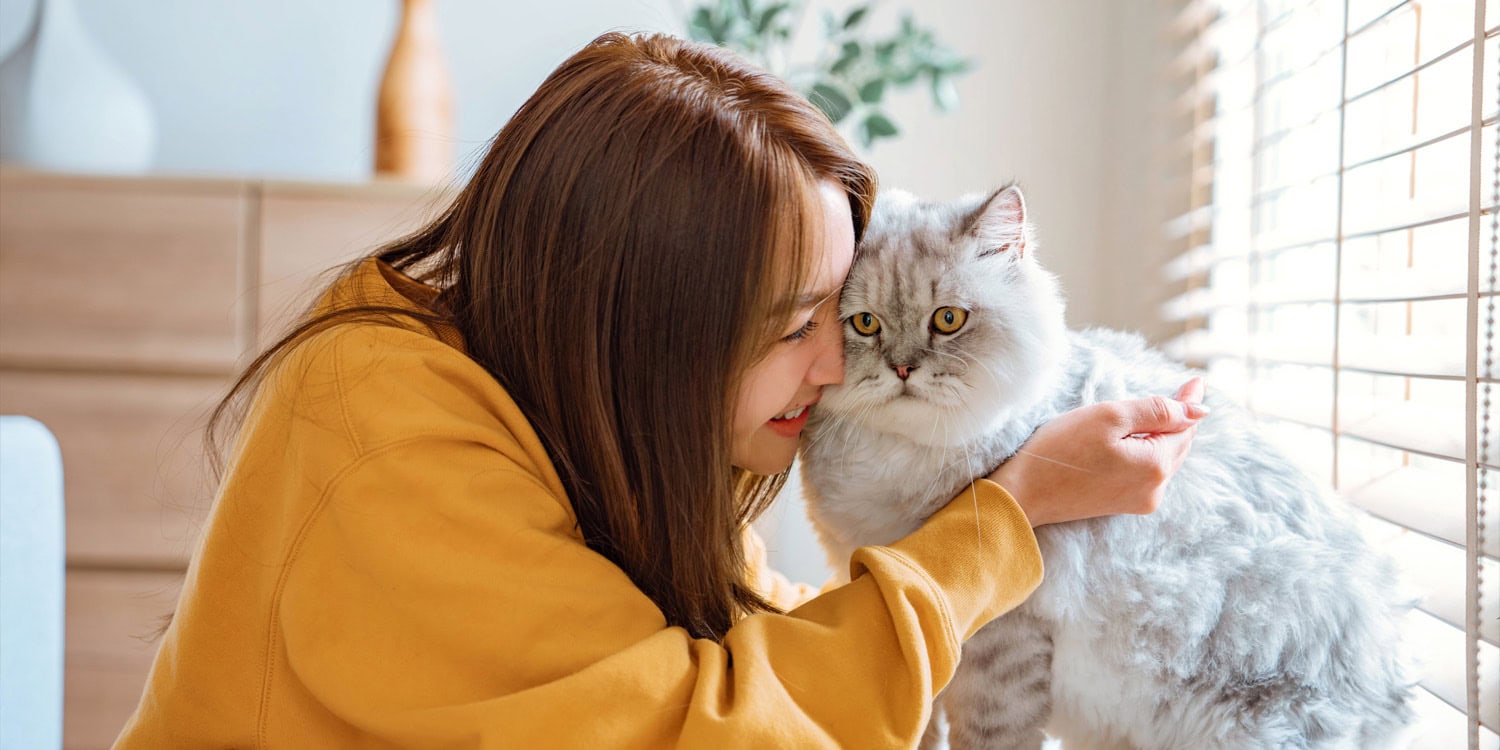Cats, like dogs and even human babies, can develop different kinds of emotional attachments to their owners, and these attachments have a noticeable impact on their lives, according to new research published in Applied Animal Behaviour Science. Scientists have discovered that a cat’s attachment style—categorized as secure, anxious, or avoidant—is linked to how they behave around their owners, how likely they are to exhibit problem behaviors, and even fluctuations in their levels of oxytocin, a hormone often associated with social bonding.
Cats are incredibly popular pets, with their numbers growing rapidly in many parts of the world. A good relationship between a cat and its owner is beneficial for both, contributing to their physical and mental well-being. Sadly, many cats are given up to shelters because of behavioral issues, with aggression toward humans being a major reason. Researchers are, therefore, interested in finding ways that help cats display healthy behavior and that help develop harmonious relationships between cats and humans.
Recent research has shown that cats are more socially intelligent than previously thought. They can understand human emotions and cues, and even recognize their owners’ voices. This suggests that the way owners interact with their cats could have a big impact on the cat’s behavior. Some studies have found links between owner characteristics (like their personality and how they interact with their pet) and behavioral problems in both cats and dogs. For example, stressful interactions can make cats more aggressive. Thus, the research team that conducted this study wanted to explore the connection between how cats and owners interact, how cats form attachments to their owners, and the role of a hormone called oxytocin.
Oxytocin might play a role in forming emotional connections between owners and pets and could be responsible for some of the mental and physical benefits that come from these relationships. Studies in dogs and their owners have shown a positive feedback loop involving friendly interactions and oxytocin release. Positive interactions, like gazing at each other, gentle touch, and petting, can trigger the release of oxytocin in both dogs and owners, which in turn encourages more positive interactions and further oxytocin release. However, we know very little about oxytocin release during interactions between cats and their owners.
“I have been working in the field of cat behavior and welfare for a while. One of my research interests focuses on how the human–cat relationship impacts cat behavior and the development of problematic behaviors,” said study author Lingna Zhang of South China Agricultural University.
“Recent research has shown that cat–owner attachment shares similarities with dog–owner and child–parent relationships, and attachment style impacts behavioral health in human and dog relationships, which has not been studied in cats. This inspired me to explore the relationship of cat attachment style, cat–owner interaction, and cat problematic behaviors. We also included oxytocin because this is the key hormone involved in bonding and social interactions.”
For their study, the researchers recruited 30 pet cats from Guangzhou, China, through social media. The cats included both males and females of various breeds, and their ages ranged from one to approximately three years old. To be included in the study, cats had to be at least one year old and have lived with their current owners for at least four months, ensuring they had enough time to form a stable attachment.
The research team first used a test known as the secure base test to assess the cats’ attachment style. In this test, the cat and its owner spent two minutes together in an unfamiliar room, followed by a two-minute period during which the owner left the room, and finally, another two-minute period when the owner returned. High-resolution cameras recorded the cats’ behavior throughout the test. The researchers observed whether the cats sought comfort from their owners upon reunion, how they explored the room, and whether they displayed any avoidance. Based on these behaviors, each cat was categorized as having a secure attachment style, an anxious style, or an avoidant style.
After the secure base test, the study moved to a more natural setting in the owners’ homes. In a familiar room where the cat usually spends time with its owner, the owners were asked to interact with their cats as they normally would for 15 minutes while being recorded by a camera. During these home sessions, the research team focused on a range of behaviors. They observed whether the cat moved toward the owner on its own, whether the cat hovered near the owner without making direct contact, and whether the owner forced interactions by holding or restraining the cat. The interactions were carefully recorded so that specific behaviors could be later analyzed for duration and frequency.
In addition to these observations, the researchers collected saliva samples from each cat twice—once 30 minutes before the home interaction and again five minutes after the session ended. These samples were used to measure the levels of oxytocin, a hormone known to be involved in social bonding and stress reduction.
Zhang and her colleagues found clear differences among cats with different attachment styles. About one-third of the cats were classified as securely attached, another one-third showed an anxious style, and the remaining cats displayed an avoidant style. Securely attached cats were observed to initiate interactions more frequently with their owners and made fewer escape attempts when the owner tried to engage them in physical contact. In contrast, cats with an anxious style sought constant proximity but sometimes became overwhelmed if the owner tried to hold them, while those with an avoidant style spent more time moving away or avoiding the owner altogether.
Interestingly, the level of oxytocin measured in the cats’ saliva reflected these behavioral differences. Securely attached cats started with lower baseline oxytocin levels but showed a significant increase after interacting with their owners. Cats with an anxious style, on the other hand, had higher baseline levels and tended to show a decrease after interaction, and avoidant cats did not show a significant change in their hormone levels.
The study also uncovered links between the cats’ social behaviors during free interaction and their overall well-being. Securely attached cats not only engaged more positively with their owners but also exhibited fewer problematic behaviors such as destructive actions or aggressive responses when meeting strangers. In addition, the amount of time a cat spent near its owner was positively linked to the rise in oxytocin levels during the interaction.
In other words, the more a cat chose to stay close to its owner, the more likely it was to experience a boost in the hormone that supports relaxation and bonding. Conversely, interactions that were characterized by forced contact from the owner or escape attempts by the cat were associated with lower levels of positive social behavior and a higher fear response when faced with unfamiliar people.
The researchers noted some limitations to their study. The secure base test, while adapted for cats, is not as widely validated for cats as it is for dogs and humans, so the findings related to attachment style should be interpreted cautiously. The sample size of 30 cats is also relatively small. Additionally, the participants were mostly young cat owners without children, which might limit how broadly the results can be applied to all cat owners.
Future research could explore these relationships in larger and more diverse groups of cats and owners. Further validation of the secure base test in cats would also be beneficial. It would be interesting to investigate what specific owner characteristics might influence a cat’s attachment style and interaction patterns. Finally, more research is needed to understand exactly which behaviors during owner–cat interaction are most effective in triggering oxytocin release in cats and why baseline oxytocin levels differ between attachment styles.
“In the future, we want to study how the human–cat interaction pattern impacts cat attachment style and oxytocin release in more controlled settings and explore the potential of appropriate human–cat interaction and the application of nasal oxytocin in promoting secure attachment and behavioral health in pet cats,” Zhang said.
The study, “The effects of owner–cat interaction on oxytocin secretion in pet cats with different attachment styles,” was authored by Hao Chang, Jie Zhang, Haitao Huang, Edgar O. Aviles-Rosa, Huiwen Huang, Yan Guo, Zaili Xiao, Qingshen Liu, Baichuan Deng, and Lingna Zhang.




